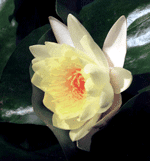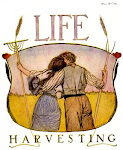"My soul glowed from the fire of your fire. Your world was a whispering water At the river of my heart." --by the poet Rumi
While in love we often fear, often unconsciously fear, that another will subsume us, that we will drown in relationship, and to some extent this is true. The ego must move aside for the opening to the path to love. Love and the soul however will not be lost or drown in another. Rather these are our immutable essences; they cannot be lost or drowned, and yet ego strongly fears this fate. Our sense of self-protection that is ego rapidly assesses any situation in which we must potentially yield to be a threat.
There is a fundamental mystery to the soul, however, writes Deepak Chopra in his book, The Path to Love. He writes further, "its integrity is not violated by merging with another person. The blending of two spirits brings more to the union than each partner started with. The process of soul-making that used to be [for me alone] "me" is now for "us." The poet Rumi expressed this thought with these words:
My soul glowed from the fire of your fire.
Your world was a whispering water.
At the river of my heart.
With the growth of spiritual realization is the awareness that two can be as one; that the multiple aspects of the Dharmakaya are are work; that the Christian idea of a triune relationship within the soul of a great spirit, communing with God are all infinite and possible. While in the state of ego, on the other hand, persons remain isolated and self-protected as if in a siege mentality. There then is no room for the other; often a feeling of isolation and a vague, undefined loneliness results. Yet spirit calls to us powerfully, first, in romantic love.
We fall in love and for the first time as Rumi passionately writes, we have the opportunity to engage our self into self as an expansion of identity. The Spirit uses relationship as its vehicle. No man is an island; spirit calls to us to overcome our fears such that love may be its replacement.
Once in relationship, however we gain a foothold over ourselves despite the passion, despite the growing self awareness, and ego often returns to us with a vengeance. Falling in love is delightful; it is passion, and a glimpse of the spirit itself. Being in love, love itself entails commitment, and a certain struggle. Many who come to this place in their spiritual journeys feel a sense of loss, and fear what is to come next.
Relationships have consequences. While they give to each person a sense of belonging, friendship, security and compassion, love also demands something from each partner. Things like patience, devotion, persistence are part of the work and struggle to be realized along the path. Sometimes relationship is hard and painful. Resolution brings joy, and it brings disappointment. "The only real difference between romance and relationship, spiritually speaking, has to do with surrender. Surrender comes naturally to two people when they first fall in love." Love's first flush gives us the courage to do that, to be fearless and act under its protective power. Spiritually, surrender is a solution to the paradox existing between ego and spirit.
Yet persons who love, who are intimates, over time often find that the ego, now returned carries them on its own agenda. Lovers play games to test one another, they withhold themselves; they are unwilling to give to spirit, and they are unwilling to give to and serve one another. Surrender now must be conscious. It must be an act of free will, of choosing this as your path. Chopra writes, "this isn't to say that surrender isn't hard work; it is conscious work. As such it can bring the same joy and delights as falling in love, the same sense of play which relieves lovers of the ego burdens."
The British writer and poet, D. H. Lawrence wrote, "That is the crystal of peace, the slow hard jewel of trust, the sapphire of fidelity. The gem of mutual peace emerging from the wild chaos of love."
A free loving commitment of the will made to another is the realization over time of: peacefulness, a companionship and a trust made by the Spirit to another which is, and is not self. "When they are fully committed... they see God in each other." On that basis, they are able to surrender, not to one another so much, as to surrender themselves to the God in each other, and to the God, the Dharmakaya in all things. Dharma is an ancient idea. It means perhaps most fully, sacredness. In its Sanskrit origin, dharma means to sustain or uphold.
Thus what upholds, honors, or respects another's life is in keeping with dharma. It is, for example in dharma not to tell lies, to deceive oneself or others. Dharma looks to the sacred, it is tied to and intimately guided by spirit. Dharmakaya, likewise, is Karuna, love; love then is a guiding force emanating from the great being, the Dharmakaya. Thus surrender in relationship is surrender to spirit, to dharma. In the Way of the Beloved, the dharma is "a vision of spiritual equality; when you perceive life through this vision, separation ends."





